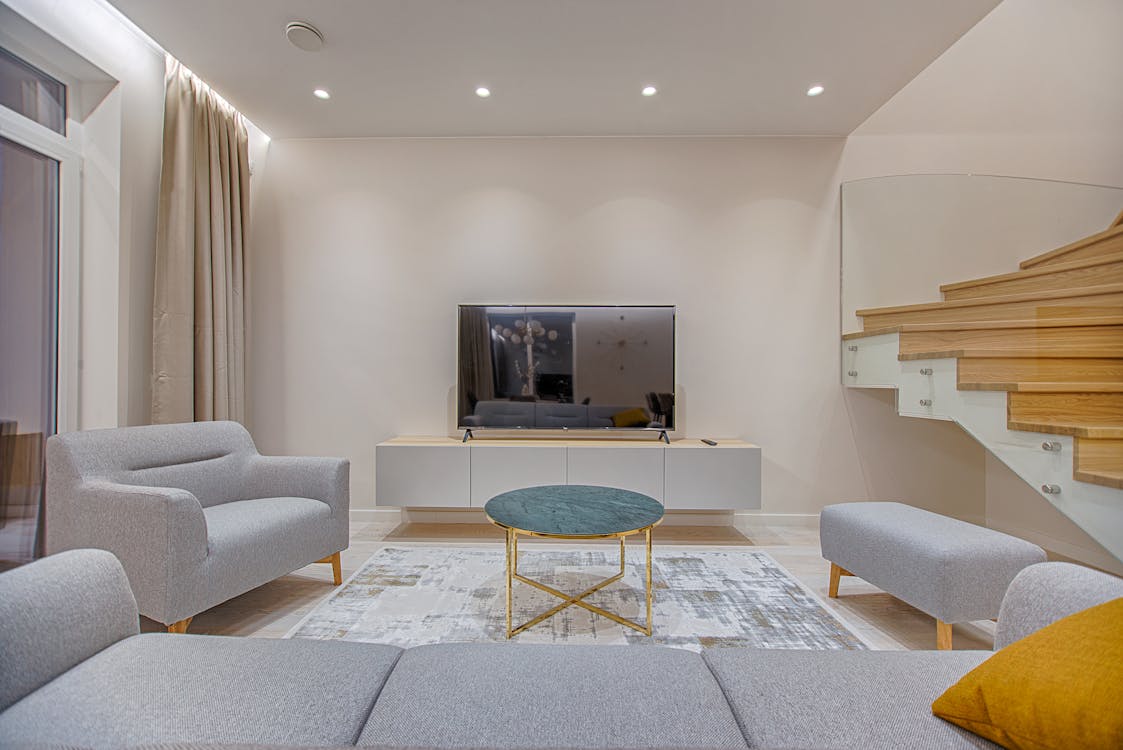
Designing a lounge in a small space can feel like a challenge, but with the right approach, you can create a stylish and comfortable area that feels spacious and inviting. Whether you’re working with a compact apartment, a cozy corner, or a narrow nook, these design ideas will help you make the most of your limited lounge space. Here are several tips to transform small spaces into functional and beautiful lounges.
1. Choose Multi-Functional Furniture
When space is limited, every piece of furniture should serve more than one purpose. Look for multifunctional items such as a sofa bed, an ottoman with storage, or a coffee table that doubles as a workspace. These items allow you to maximize the utility of your lounge without overcrowding the space.
For example, a sleek sofa bed can provide seating during the day and transform into a guest bed at night. Similarly, a stylish ottoman can offer extra seating while also storing blankets or magazines inside.
2. Opt for Light Colors and Reflective Surfaces
Lighter colors help make small spaces feel more open and airy. When choosing a color palette for your lounge, stick to light shades such as whites, soft greys, pastels, or neutrals. These hues reflect light and create the illusion of a larger space. You can add pops of color with accessories like cushions, rugs, or artwork to inject personality without overwhelming the room.
Incorporating reflective surfaces, such as mirrors or glass furniture, can also amplify the sense of space. A well-placed mirror can make a small lounge feel twice as big by reflecting natural light and giving the room a more expansive feel.
3. Maximize Vertical Space
In small areas, vertical space is often underutilized. Take advantage of your room’s height by incorporating tall bookshelves, floating shelves, or wall-mounted cabinets. These options provide storage without taking up valuable floor space, helping keep your lounge uncluttered.
Additionally, hanging artwork or decor higher on the walls draws the eye upwards, creating the illusion of a taller room. You can also use vertical lighting, such as sconces or tall floor lamps, to enhance the sense of height in the space.
4. Choose Furniture with Slim Profiles
Bulky furniture can overwhelm a small space, making it feel cramped. Instead, opt for furniture with slim profiles and clean lines. Sofas with narrow arms, low-backed chairs, and minimalist tables help maintain an open feel without compromising comfort. Look for pieces that sit on exposed legs rather than those that sit directly on the floor, as this helps create a sense of airiness.
Furniture that can be folded or stacked away, like folding chairs or nesting tables, can also be useful in a small lounge, allowing you to adapt the space based on your needs.
5. Use Area Rugs to Define Zones
In open-plan spaces or multifunctional rooms, an area rug can help define the lounge area without the need for walls. Choose a rug that fits proportionally to the space—too large, and it will overwhelm the room; too small, and it won’t anchor the seating area effectively.
By using a rug to visually separate the lounge from other areas (such as a dining space or a home office), you can create a sense of order and functionality, making the most of a small footprint.
6. Incorporate Smart Storage Solutions
Clutter can quickly make a small lounge feel even smaller. To keep your space organized, invest in smart storage solutions. Look for furniture that offers hidden storage, such as coffee tables with drawers, built-in shelving, or sofas with storage compartments underneath.
Wall-mounted cabinets and floating shelves provide extra storage without taking up floor space. You can also use decorative baskets or storage boxes to keep items out of sight but easily accessible when needed.
7. Let in Natural Light
Natural light can make even the smallest lounge feel bright and welcoming. If possible, keep window treatments minimal to allow maximum light into the space. Sheer curtains or blinds that can be easily rolled up are ideal for maintaining privacy without blocking light.
If natural light is limited, you can create a similar effect by using artificial lighting strategically. Opt for multiple light sources, such as floor lamps, table lamps, and wall sconces, to evenly distribute light throughout the room. Layering light in this way creates depth and dimension, making the space feel more expansive.
Conclusion
Transforming a small space into a functional and stylish lounge is entirely possible with a thoughtful approach to design. By choosing multi-functional furniture, utilizing vertical space, and incorporating light and smart storage, you can create a cozy and inviting lounge that feels much larger than it really is. Remember, the key to small space design is balancing functionality with aesthetics to create a comfortable environment that meets your needs without feeling cluttered.




